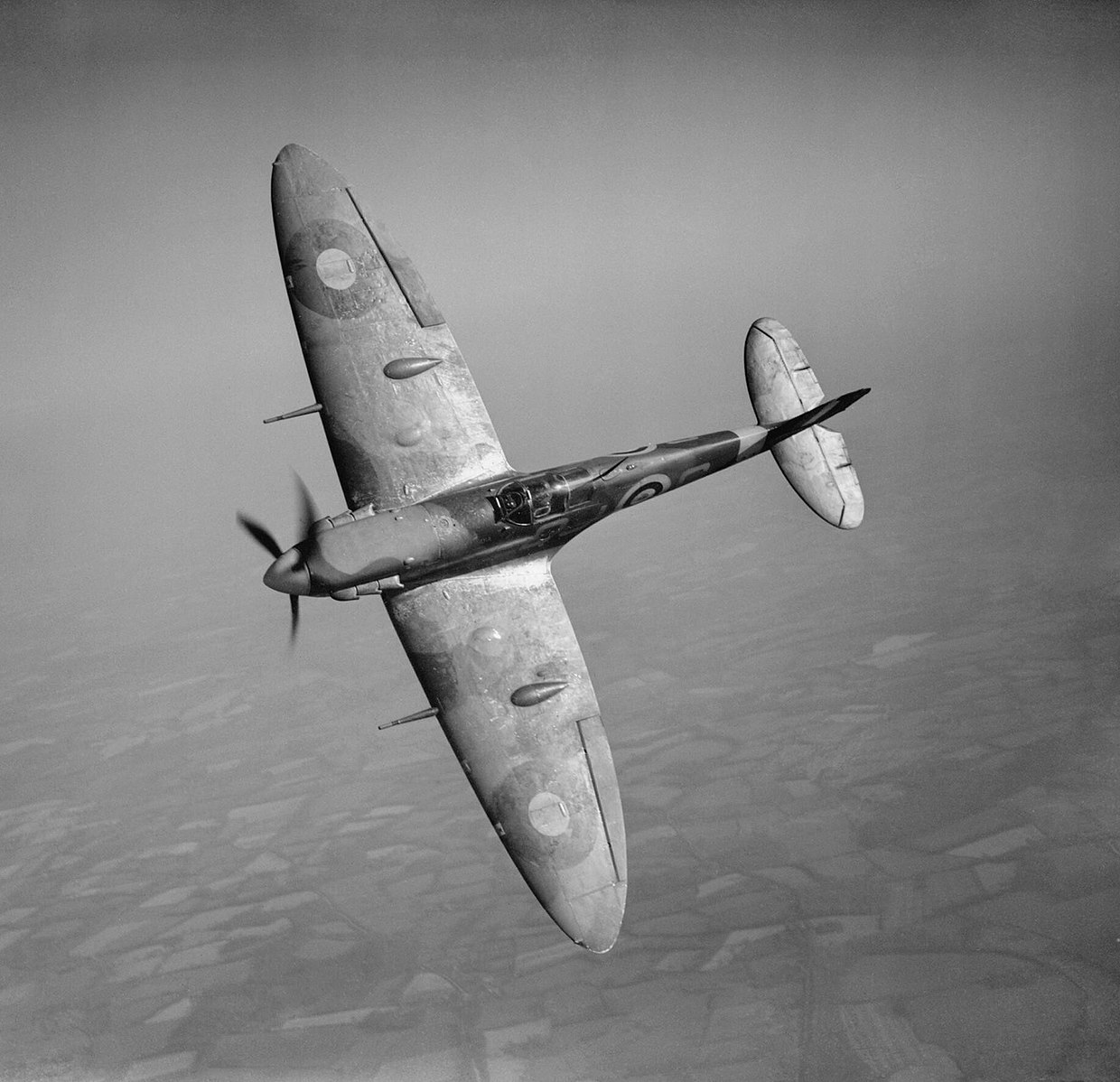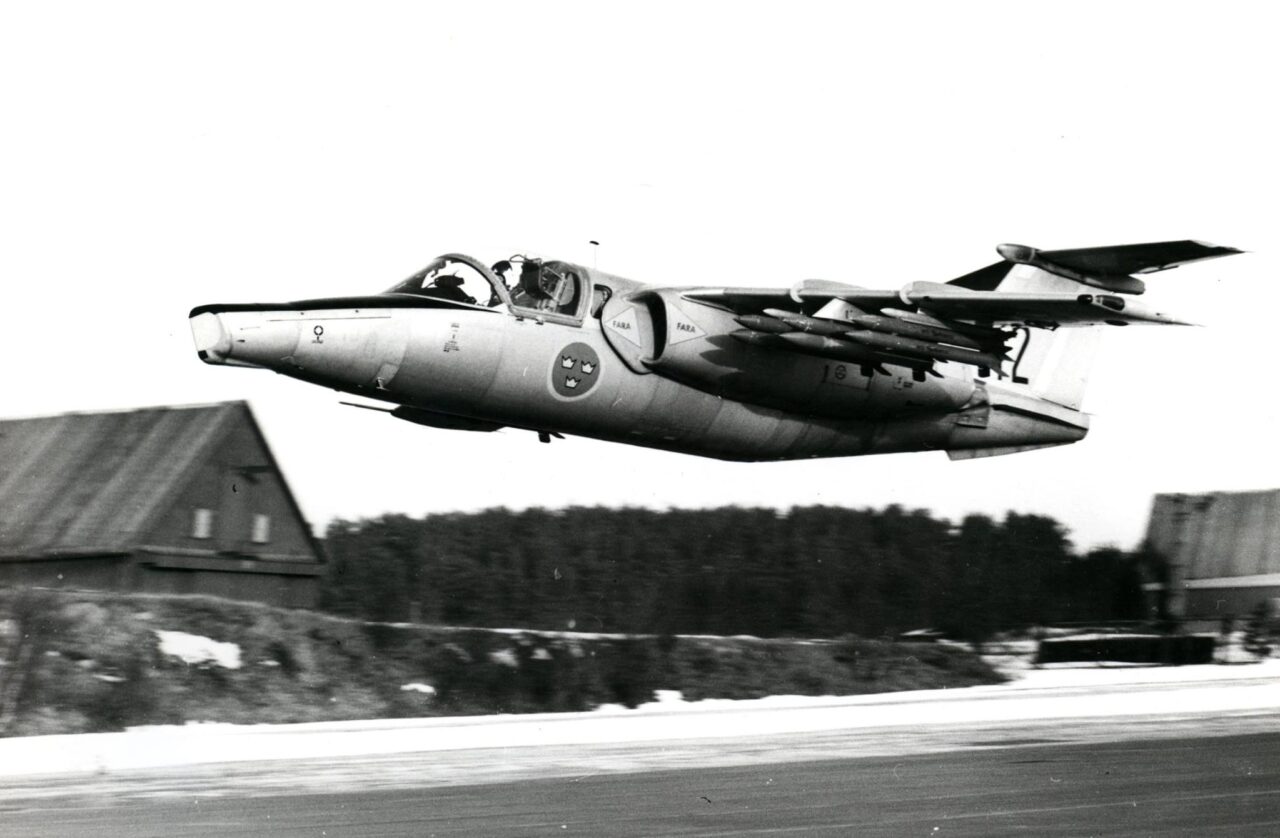JAS – One aircraft to rule them all
The idea of having a multi-role aircraft, a single type of aircraft that could handle all the different tasks that are expected of modern combat aircraft, has existed for a long time. As modern combat aircraft have become increasingly expensive to develop, manufacture and maintain, even the best-financed Air Forces have begun to investigate the possibility of bringing out an aircraft that would be able to fulfil every task except transport. In Sweden development gradually resulted in the JAS project. JAS stands for the initials of the Swedish words for Interceptor, Ground Attack and Reconnaissance.
Here however one must distinguish between two aspects. Historically, many aircraft have been used for all possible mission types. The famous Supermarine Spitfire from Great Britain started off as a pure interceptor but during the War was employed for reconnaissance photography and also used for ground attack. In the latter case it was a question of acting in a secondary role, that nevertheless became important towards the end of the War when the German Luftwaffe was obliged to appear much more sporadically and the Allied need for a pure interceptor diminished. The most basic method was for the aircraft to use their machine guns and cannons against ground targets, something fighter aircraft had done for a long time when necessary. Now the aircraft began to be equipped with racks to carry bombs, which meant the need for extra training. Some squadrons started to specialize in this.

A Supermarine Spitfire Mk Vb of No. 92 Squadron May 19th 1941. Photograph: Imperial War Museum
The term used for these aircraft was fighter-bomber, or as the German soldiers called “Jabos”, an abbreviation of the German word “Jagdbomber”. But basically it was a question of a subsidiary task that however expanded to become vital.
However photo-reconnaissance was something else and special versions of the Spitfire were constructed specifically for this purpose. These were unarmed and cameras were installed instead of guns. So even though an aircraft originating as a fighter and that could fire its weapons against ground targets could not be used for reconnaissance. Also, for more extensive ground attack missions, specialised bomber aircraft were needed. After the War however lighter bombers one by one disappeared as it became apparent that fighter aircraft equipped with bombs could perform these missions almost as effectively and in addition performed better if they were intercepted by enemy fighters.
Similarly, ground attack missions expanded and became all the more demanding, not least due to the more efficient anti-aircraft fire. This required pilots who specialised in this kind of attack. In addition, there were certain fighter tasks that were so specialized that they required aircraft with performance that to some extent was the opposite of that required for a good ground attack aircraft.
Multi-role combat aircraft
Many Air Forces started to study multi-role combat aircraft projects, and such work also began in Sweden. Developments in aviation progressed at enormous speed at the end of the 1940s and the beginning of the 1950s. Already in 1952 Saab began to look for a successor to both A32 Lansen and even the J35 Draken. This was even before the development of the Draken had seriously started! The various different projects eventually resulted in the Saab 37 Viggen. Among other things one had looked at the possibility of bringing out a multi-role aircraft of a basic design that could in different versions undertake all the primary tasks. This was not a new idea and in practice there existed several multi-role aircraft.
But the discussions concerning what a multi-role aircraft should look like took time, and only by 1962 was a more finalised proposal put forward. At the same time, the Saab J35 Draken was being developed and improved, so resources were stretched. It therefore took time to arrive at the final proposal for what would become the Saab 37 Viggen to fill the gap and become the next generation of combat aircraft. The ground attack and interceptor versions of the Viggen would also have a limited capability of performing the other tasks so they were defined as the AJ 37 ground attack version and the JA 37 Viggen interceptor version. (The Swedish designations were A for ground attack and J for interceptor). The first letter stood for the aircraft’s primary role and the second the limited secondary role. In addition two reconnaissance variants were produced, the SH37 and SF37. In this case the S stood for reconnaissance, the H for maritime surveillance and the F for photographic reconnaissance. The SH37 had powerful radar that was used to detect and monitor ships in the Baltic, while the SF37 was a more classic reconnaissance aircraft.
Although the Viggen was an excellent aircraft, it was expensive. In the process of development and construction there were changes, among other things tactical conditions due to developments in weapons and technology that had to be taken into account. Out of the 831 aircraft that were planned, in total 329 in all versions were built. But if one compares internationally with other combat aircraft built in the same period, the Viggen project stands out as being extremely cost-effective.
The first ideas for a new fighter aircraft to succeed the Viggen were already being considered in connection with the Swedish Air Defence Investigation in 1967. Being proposed was the thought of trying to reduce the size of future combat aircraft by utilising technical advancements. This was taking place at the same time as international development primarily focused on larger aircraft with more powerful engines. This is where the idea of a new, smaller multi-role combat aircraft that would replace the Saab 37 Viggen began to take shape.
The B3LA saga
One of the many factors that influenced this development was that a common defence system for joint Swedish defence strategy planning and development was introduced. The aim was to make areas such as procurement more efficient. In practice, however, nothing changed, at least as far as the Air Force was concerned. The effect therefore was that attempts were made within defence to focus on the principal types of unit. And in the 1970s this meant the focus was on long range combat. This meant ground attack aircraft, submarines, etc. So emphasis was now laid upon the production of a new ground attack aircraft that to some extent would fill the gap until a new multi-role aircraft would appear. Work on the Interceptor type Viggen was going full ahead so the need to look forward in respect of fighter or interceptor aircrafts was not given priority. In addition, the focus was on units for remote combat.
The project that went furthest and was batted to and fro during the whole of the 1970s was given the designation B3LA, where LA stood for Light Attack. The thought was that this could act as a training aircraft to replace the Saab 105 SK60. But there was really no need to replace the SK60 and already in the 1970s it was thought that the SK60 would be used beyond 2000. The B3LA would be able to carry more advance weapons than the SK60 in the role of light attack, but would not have radar and would, just like SK60, not be supersonic. The B3LA would be a cheaper alternative, but less effective than a ground attack Viggen. A new missile was also projected for the B3LA, with the working designation of B83. It was proposed to be a “hard target” missile that primarily could be used to destroy enemy tanks. In order to find and target these, the B3LA would be equipped with an IR seeker to find heat sources such as tanks, and the idea was to fire up to four missiles against different targets simultaneously.

The B3LA never progressed beyond the model stage.
Thanks to its IR equipment, the B3LA would be able to operate both day and night against enemy airborne invasion forces and armoured formations. This would be a highly advanced system for an aircraft that would not even carry radar and was subsonic. Overall, the B3LA would be a rather conventional aircraft, particularly in light of the newly conformed Draken and Viggen. The Air Force staff also demanded that the B3LA should be able to operate from grass airfields, which demanded a particularly robust undercarriage.

A Saab SK60 equipped for ground attack takes off from a temporary air base somewhere in Sweden. Foto. The Swedish War Archive
It is also relevant that the main task of Swedish ground attack flying units would in the first place be to aim at targets of great tactical and strategic importance. In the first case this would mean the ports facing the Baltic and enemy ships that could carry out an invasion of Sweden. Providing air support for the Swedish Army, known internationally as “Close Air Support” was a long way down the priority list, although at least on it, but in the form of direction against major troop concentrations. The direct support that the Army could expect would be in the form of light attacks by the SK60, which were earmarked for that task in the case of war. The B3LA was a development of this concept; not least where a special missile intended to attack tanks was an important part. On the whole the B3LA was an aircraft that would have suited the Army very well.
An alternative or complement that also entered into the discussion was the A20, a further development of the ground attack Viggen, and there was also the possibility of acquiring foreign aircraft.
After several years of investigation and discussion to and fro, in 1979 the final decision was made to not go any further with either the B3LA or the A20 projects. Instead it was decided to invest the resources into developing the anti-ship missile known as the Robot (Swedish Missile type) 15. In retrospect this was a good decision and today the Robot 15 is a very important part of the Swedish Defence Forces ability to confront enemy warships and troop transport vessels at great distances. These missiles have also been sold to other countries.
The flip side of the lengthy discussions concerning the B3LA became the development of a new multi-role aircraft to replace the Viggen, which had all the time been put off. So it was that in December 1979 Saab finally presented a proposal for a new multi-role aircraft that would replace the Viggen system to the Swedish Ministry of Defence.
This was the start of the road towards the JAS 39 Gripen.
